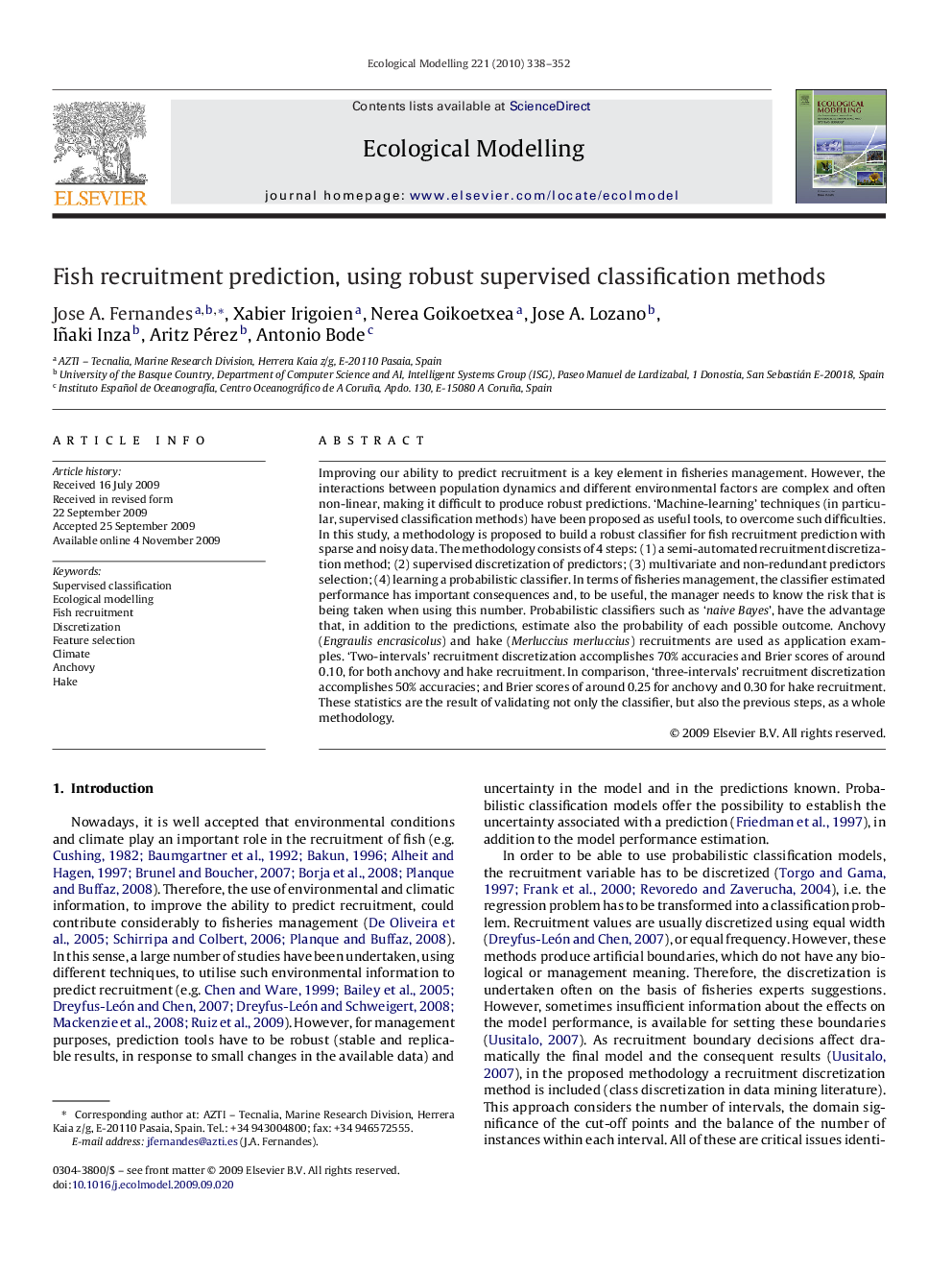| Article ID | Journal | Published Year | Pages | File Type |
|---|---|---|---|---|
| 4377496 | Ecological Modelling | 2010 | 15 Pages |
Improving our ability to predict recruitment is a key element in fisheries management. However, the interactions between population dynamics and different environmental factors are complex and often non-linear, making it difficult to produce robust predictions. ‘Machine-learning’ techniques (in particular, supervised classification methods) have been proposed as useful tools, to overcome such difficulties. In this study, a methodology is proposed to build a robust classifier for fish recruitment prediction with sparse and noisy data. The methodology consists of 4 steps: (1) a semi-automated recruitment discretization method; (2) supervised discretization of predictors; (3) multivariate and non-redundant predictors selection; (4) learning a probabilistic classifier. In terms of fisheries management, the classifier estimated performance has important consequences and, to be useful, the manager needs to know the risk that is being taken when using this number. Probabilistic classifiers such as ‘naive Bayes’, have the advantage that, in addition to the predictions, estimate also the probability of each possible outcome. Anchovy (Engraulis encrasicolus) and hake (Merluccius merluccius) recruitments are used as application examples. ‘Two-intervals’ recruitment discretization accomplishes 70% accuracies and Brier scores of around 0.10, for both anchovy and hake recruitment. In comparison, ‘three-intervals’ recruitment discretization accomplishes 50% accuracies; and Brier scores of around 0.25 for anchovy and 0.30 for hake recruitment. These statistics are the result of validating not only the classifier, but also the previous steps, as a whole methodology.
